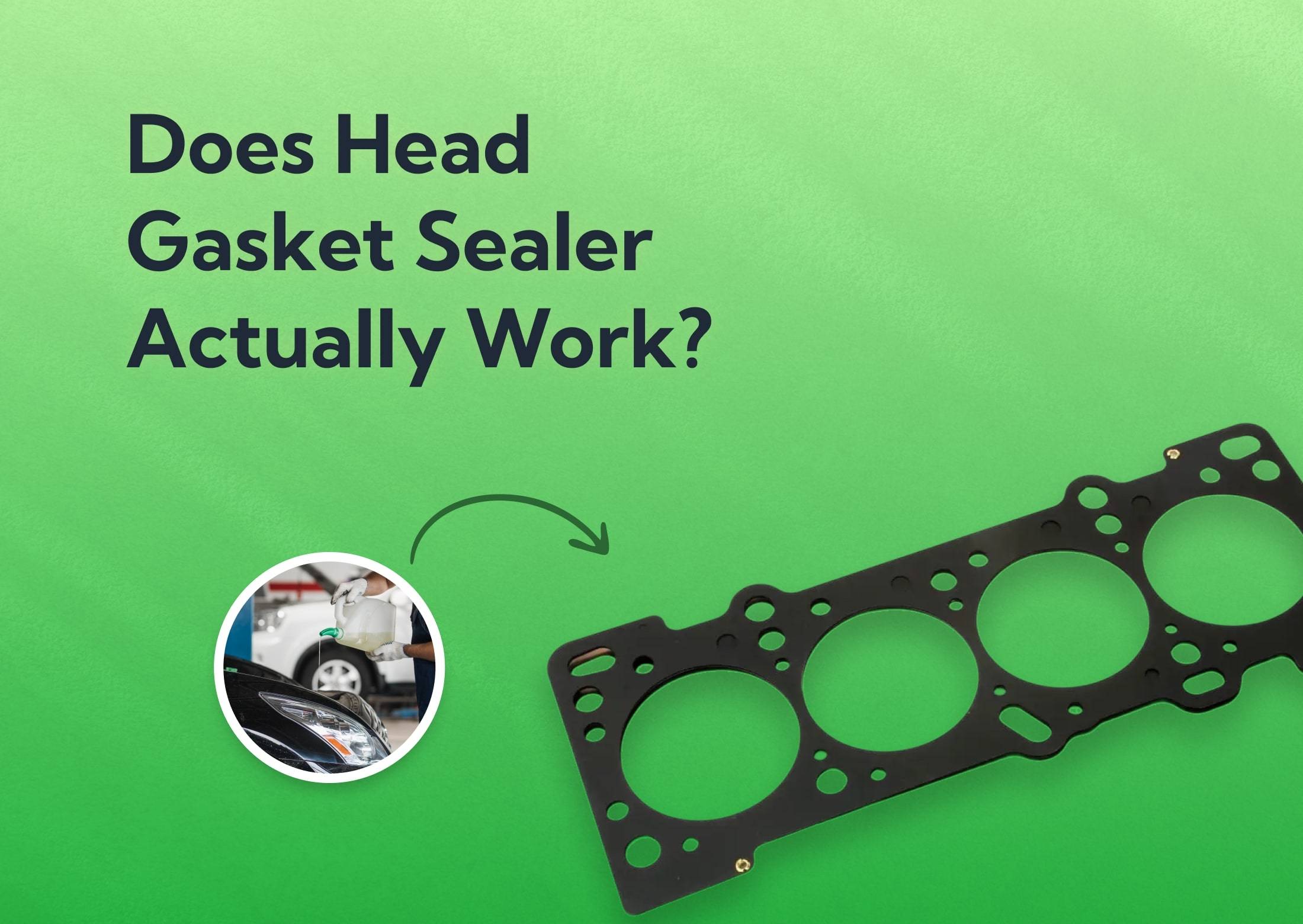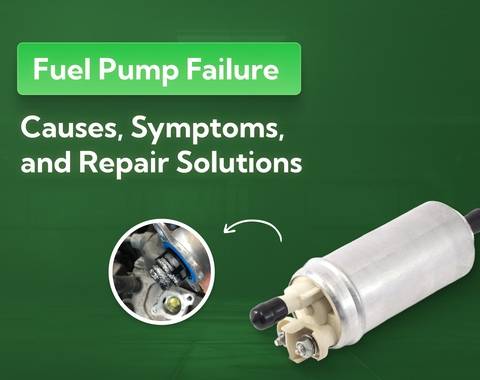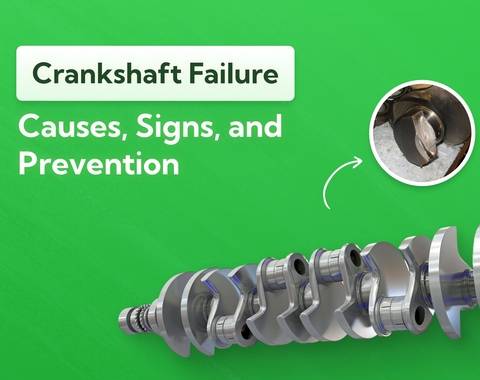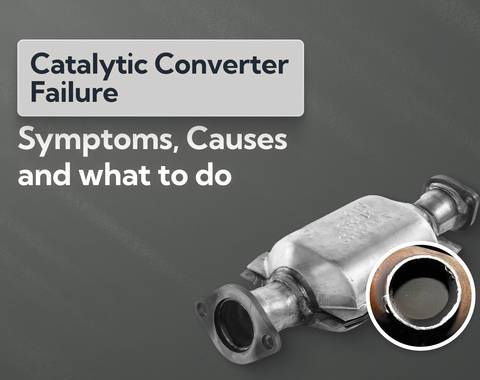Does Head Gasket Sealer Actually Work?
Head gasket sealers can buy you some time, but they don’t always work. This guide breaks down when they do, when they don’t, and how to apply them properly. Whether you’re facing a minor leak or a full-blown failure, this article has everything UK drivers need to know before pouring anything into the radiator.
Last updated: 16th October, 2025

Award-winning CEO driving growth and social impact across automotive, recycling, and technology-led enterprise platforms.

Listen to this story
Does head gasket sealer actually work? Sometimes, but don’t expect miracles.
These products are made to plug small internal or external leaks in your head gasket by circulating through the engine with your coolant. When they find a breach, they harden under heat and pressure to (hopefully) seal it. It’s a temporary fix, like a bandage.
People turn to sealers because they’re cheap, quick and easy. Pour it in, top off the coolant and you’re back on the road in 15 minutes. Not everyone can afford the £1,000 repair bill for a blown head gasket straight away. And that’s where sealers earn their place.
But here’s the deal: they’re only useful when the damage is minor, symptoms are just starting and you're trying to stretch the life of the car a bit longer while you weigh up your options.
This guide breaks it all down: when they work, when they don’t and how to know what your car really needs.
What's in this article
What is a head gasket sealer?
Head gasket sealers are chemical products that plug small leaks in a car’s head gasket without pulling the engine apart. You pour them into the radiator or expansion tank, and they circulate with the coolant. When they reach a leak, heat and pressure cause the formula to harden, sealing the gap temporarily.
Sealers come in three different forms:
- Liquid sealers
- Paste-style compounds
- Pour-and-go formulas with additives
Most drivers use them in the short term because the alternative is expensive. The cost of a proper head gasket replacement can easily stretch over £1,000 when you factor in labour. A bottle of sealer? Closer to £40.
How to use head gasket sealer
Using head gasket sealer is usually straightforward, but you’ve got to follow the steps properly or it won’t do a thing. Here’s the general process:
- Start with a cold engine. Never open the radiator cap while hot.
- Drain some coolant if needed to make space for the sealer.
- Shake the bottle (if liquid) and pour it directly into the radiator or expansion tank.
- Top up coolant if required.
- Start the engine and let it idle with the heater on full blast.
- Let it run for 15 to 30 minutes so the sealer can circulate and react with heat.
Once the engine’s had time to reach operating temperature, the sealer will begin to set. Keep an eye on the temperature gauge while it’s running because overheating now will only make things worse.
After the job, monitor for leaks over the next couple of days and check your coolant levels regularly. If the leak’s sealed, you’ll know.
Preparing the engine
Before you do anything, make sure the engine is completely off and stone cold. Trying to open the radiator cap on a hot engine is dangerous because the system is pressurised and can spray boiling coolant.
Once it’s cool, pop the bonnet and check the coolant level in the radiator or expansion tank. You’ll want enough room to add the sealer without overflowing the system.
If the coolant is already full, drain a bit out to make space. And while you’re there, have a quick look for obvious signs of oil in the coolant (e.g. thick, milky sludge). That’s a strong sign your head gasket is fully blown. No sealer on earth is fixing that.
Adding the sealer
Follow these steps to add the head gasket sealer properly:
- Read the label. Every product is slightly different. Some are single-use bottles, others depend on engine size.
- Shake the bottle well. With liquid sealers, the active ingredients settle fast.
- Pour it in slowly through the radiator cap or expansion tank, depending on your system.
- Use the right amount. Every brand has a different threshold for what one bottle actually covers. Always verify your vehicle’s cooling capacity and engine displacement before pouring, and match it to the product’s stated coverage.
- Top up with coolant if you need to so the system is filled to the proper level.
Step #4 is where I see drivers tripping up the most. Some brands’ standard bottles cover small 4- to 7-litre systems. Others treat up to 15 litres or more. Using too little sealer makes it ineffective and using too much clogs the cooling system. So depending on your engine size, you might have to buy 2 or 3 bottles.
Running the engine
Once the sealer’s in and the coolant’s topped up, start the engine and let it idle. Turn the heater on full blast so the coolant can circulate through the whole system, including the heater core.
Let that run for 15 to 30 minutes, depending on what the bottle recommends. That gives the sealer time to find the leak, react to the heat and (hopefully) do its job. Don’t rev the car and don’t drive it. Just let it sit there and get properly hot.
Checking for leaks
After everything’s run and cooled down, check for puddles under the car and wet spots around the engine head. Keep an eye on your coolant level over the next few drives too. If it keeps dropping, the sealer didn’t hold.
Watch your temperature gauge as well. If it climbs too quickly or keeps flirting with the red, that’s your engine telling you the problem’s still there. You might also notice white smoke from the exhaust or rough idling (both signs that coolant is still sneaking into the combustion chamber).
If the sealer didn’t do its job, time to take the car in for a head gasket replacement.
How durable is head gasket sealer?
Head gasket sealers are more of a “get you home” or “buy some time” kind of fix than a long-term solution. If you’re lucky, they’ll stop a small coolant leak and keep your car running for a few extra weeks.
But the moment you're dealing with a larger leak or an older engine that's already been through the wringer, the odds go down fast. Things like the size of the leak, how well the engine’s been maintained and how much pressure the cooling system runs under affect how long the sealer will work (if at all).
How Long Can You Expect It to Last?
Sometimes the head gasket sealer works for a day. Sometimes it holds for a year. I’ve seen both. And if you go digging through the product websites, you’ll see the same thing: vague promises and “up to 12 months” kind of claims.
Don’t take that at face value. If you assume your car’s magically sorted for the next year, you’re taking a huge gamble. The sealer might block a small leak today but if the underlying issue gets worse, you’re now dealing with overheating, warped parts or an engine that’s completely shot.
When the sealer fails
Heat, pressure and vibration eventually break down the seal. This is why sealers don’t last forever, especially not on bigger leaks and high-mileage engines. And if you keep driving like you normally would, tow or sit in traffic with the heater off, you’re pushing it even faster.
Warning signs it’s failing?
- Coolant levels dropping again
- Steam under the bonnet
- White smoke
- Rising temps
Same symptoms you had before.
Factors affecting durability
Durability depends on:
- Leak size: Small weeps seal better than full-on breaches.
- Engine type: Turbocharged and high-compression engines generate more heat and pressure.
- Operating temperature: Hotter engines break sealers down faster.
- How you drive: Heavy loads, long motorway runs and hard acceleration all shorten its lifespan.
The smallest external seep on a 1.6L petrol engine? The sealer might hold for a while. But a larger internal breach on a hot-running diesel? You’ll be lucky to get a couple days.
Best types of head gasket sealers
The three most common types are liquids, pastes and pour-and-go formulas, each with their own strengths and trade-offs.
- Liquid sealers are for forming a gasket in place, especially on modern engines without traditional gaskets.
- Pastes are thicker and more aggressive, better for sealing bigger breaches — but they need a careful hand.
- Pour-and-go products are aimed at DIY drivers looking for a quick fix without opening the engine at all.
Choosing the right type really comes down to two things: how bad the leak is, and how healthy the rest of the engine is.
Let’s break it down.
Liquid sealers
Liquid head gasket sealers flow freely through the cooling system and are designed to seek out small cracks or gaps. When they hit a hot spot (usually the leak) they harden and form a temporary seal.
They work best on minor, external leaks where coolant is seeping but not gushing. You’ll often see good results if you’ve caught the problem early, especially on smaller petrol engines. They're easy to apply, relatively safe for your cooling system, and don’t usually cause clogging if used correctly.
But they’re not miracle workers. If the leak is large or warped components are causing it, liquid sealers just won’t hold. They’re a short-term helper, not a heavy-duty fix.
Paste sealers
Paste sealers are much thicker. You apply them directly into the cooling system, or even onto the gasket surface itself in some engine rebuild scenarios. They’re sometimes used in more severe cases where a liquid just won’t cut it.
Their thickness makes them better suited for larger cracks, surface joints and more stubborn leaks, and in general, they last longer than liquid options. Since you see exactly where you apply it, they also give you more control and precision.
That said, paste sealers aren’t beginner-friendly. You need to follow the instructions exactly. And they require disassembly, surface prep and curing time. Not ideal if you’re just looking for a quick fix in the driveway.
Pour-and-go sealers
These are the most convenient option: open the bottle, pour it in, run the engine. Done in under an hour with no tools, draining or fuss. They’re for anyone who don’t want to get their hands dirty and need something fast.
Pour-and-go sealers can work well on very minor leaks when your engine is still running OK otherwise. They’re great for situations where you need to get to the garage or are going to scrap the car and just need to hold the system together.
But simplicity comes at a cost. These products sometimes contain diluted formulas, so they’re not built for anything beyond surface-level problems. If your head gasket’s leaking significantly or if coolant is getting into the oil, these won’t even come close to solving the issue.
Pros and cons of using head gasket sealer
Here’s the honest breakdown.
Pros:
- Cheap compared to a full head gasket replacement (which can cost £1,000+)
- Fast and easy to apply, often with no tools or teardown
- Good short-term option for small leaks, especially in older cars not worth the repair bill
- Can buy time to plan or save for proper repairs
Cons:
- Not a real fix, just a patch that may wear off quickly
- Won’t work on large leaks, warped heads or cracked blocks
- Can clog radiators, heater cores, or coolant passages if overused or misapplied
- Delays proper repair, which can lead to worse (and more expensive) damage down the line
Pros of using head gasket sealer
Head gasket sealers offer a quick, affordable way to keep your car running for a bit. If the leak is small and you catch it early, a good sealer gives you enough breathing room to sort out repairs on your terms.
Cost-effective solution
A bottle of sealer costs anywhere from £20 to £50. Compare that to a £500 to £2,000+ head gasket job. For drivers on a budget or weighing whether the car’s even worth fixing, it’s a low-risk first step that’ll slow down the issue.
Quick and easy application
No garage. No ramps. No tools. Most sealers are “pour and idle” jobs that take under an hour and you’re up and running after that. That’s a massive win if you’re stuck at home or just need something fast to get the car moving again, since professional work will take several days.
Temporary relief for older cars
If your car’s already on its last legs and headed for the scrap yard, dropping a grand into engine work makes no sense at all. A sealer buys you a few more weeks of use, which is enough to arrange collection or finish one last commute.
No need for engine disassembly
One of the biggest perks: you’re not pulling the head off or stripping anything down. Head gasket repairs involve major labour and hours of shop time. Sealers, when they work, do it all from inside the cooling system with zero spanners required.
Cons of using head gasket sealer
While they’re a practical way to buy time to schedule a proper repair or decide whether to scrap the car, sealers come with a list of drawbacks you can’t ignore
Temporary fix, not permanent
Even when they work, the seal can break down over time under pressure, temperature swings and daily driving stress. You’re pressing ‘snooze’ on the problem, not solving it. And you have to limit the load you put on your engine if you want ‘snooze’ to last more than a couple days.
Potential for further engine damage
Some sealers contain fibrous or particulate additives designed to "fill the gap". Trouble is, they don’t always stay where you want them. If they settle in narrow coolant channels, heater cores or the radiator, you could end up with clogs, poor flow and engine overheating.
Limited effectiveness on large leaks
If you’ve already got combustion gases shooting through a blown gasket or coolant mixing with your oil, no bottle on the shelf is going to fix that. It’s simply too much for a chemical patch to handle.
Not suitable for all engine types
Turbocharged engines, high-compression setups and engines tuned for performance (e.g. BMW M engines, Ford ST/RS models, Vauxhall VXR) run hotter and under more pressure. That puts extra strain on any temporary seal.
Other engine types that don’t always play nice with head gasket sealers:
- Modern aluminium engines (some BMWs, Mercedes and Jaguars)
- Engines with complex cooling systems (some V6s, V8s and hybrid setups)
- Diesel engines with high cylinder pressures
Is head gasket sealer worth it?
Head gasket sealer is worth a shot if the leak is minor, the engine still runs well and you’re trying to squeeze a bit more life out of the car. Just make sure you’ve weighed up the vehicle’s age, condition and whether the engine can even handle a chemical fix. If the leak is large or the car’s worth keeping long-term, skip the sealer and go straight for a proper repair.
When is it worth using head gasket sealer?
Sealer makes practical sense when the leak is small, symptoms are mild and you’re not ready just yet to throw thousands into the engine. Maybe the car’s on its way to being scrapped, or maybe you just need a couple more months out of it.
If the engine still starts cleanly, runs without overheating and isn’t mixing oil and coolant, a sealer might genuinely hold things together for the time being.
What the experts say

Steven Jackson OBE
When should you replace the head gasket instead?
If coolant’s getting into the oil, you’ve got white smoke pouring from the exhaust or the engine’s overheating within minutes, skip the sealer. You’ve already got a blown head gasket and using one could make things worse.
Also, if the car’s in good nick and you want to keep it long-term, a proper head gasket replacement is the only fix that makes sense. It’s expensive now, but it restores the engine properly and avoids the risk of costlier failures down the line.
When is scrapping the car the better option?
If the cost of a head gasket repair is more than 50% of the car’s value, scrapping starts to make a lot more sense. This is especially true for older vehicles with rust, 100,000+ miles or other looming problems. No point pouring £1,200 into a £1,000 car when you can get a fair scrap price and move on without the stress.
Frequently asked questions
No. Head gasket sealers are a temporary solution at best. A true blown gasket needs to be replaced. Sealers might hold a minor leak for a while, but they won't repair serious damage.
The reason for this is that the head gasket sits between the engine block and cylinder head, sealing combustion, coolant, and oil passages under extreme pressure and heat. Once it's breached, no liquid sealer can fully restore that complex, high-stress seal.
It depends on the leak size, engine condition, how the car is driven and a little bit of luck. Some seals last a few days, a few hold for months and most fail if you push the engine too hard or it’s already too heavily damaged.
Technically, the answer is ‘maybe’. But the reality is that sealers aren’t built to handle wide gaps, deep breaches, or anything under serious pressure. They might slow a large leak for a short time but you’ll need to go in for a full head gasket replacement ASAP.
Generally yes, if you use it properly and in the right type of engine. But improper use or using the wrong product can clog radiators, heater cores or coolant passages. While most sealer brands will claim it’s a surefire solution, the reality is there are quite a few risks. And those risks are amplified if you try to stretch out the time between application and actual repair.
Watch for leaks, steam and coolant loss over the next few days. If the engine runs at normal temperature, the coolant level stays steady and there’s no smoke or misfiring, those are good signs the sealer held.
About Car.co.uk

Share on
Latest news & blogs










